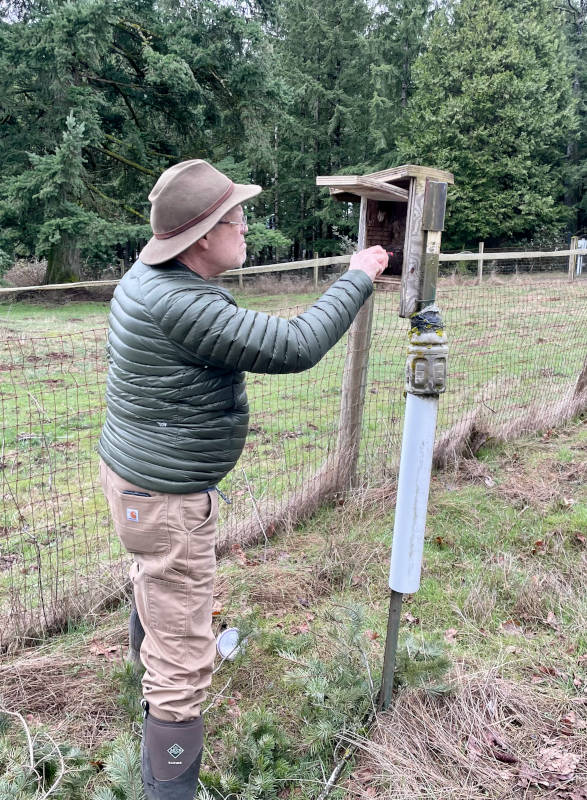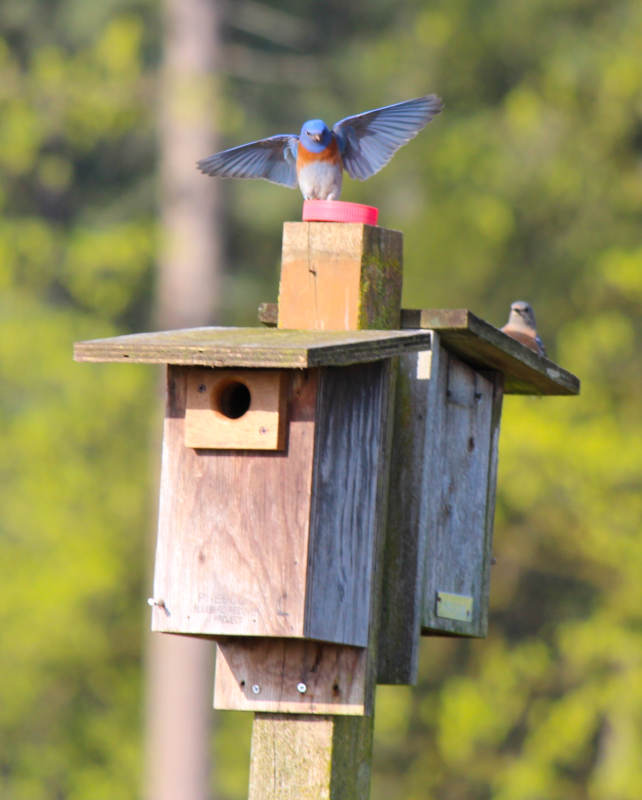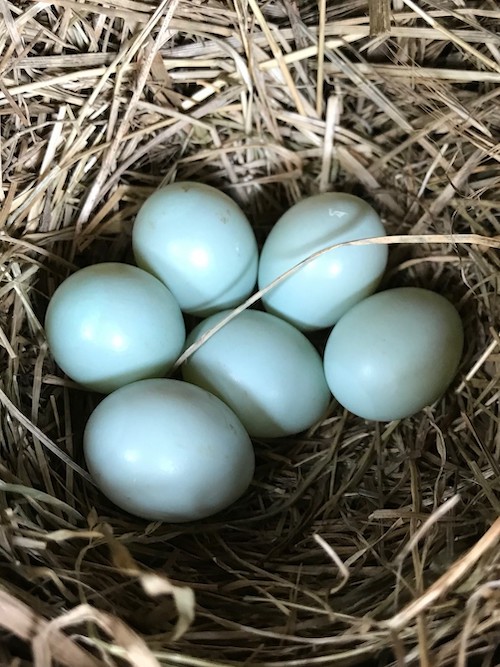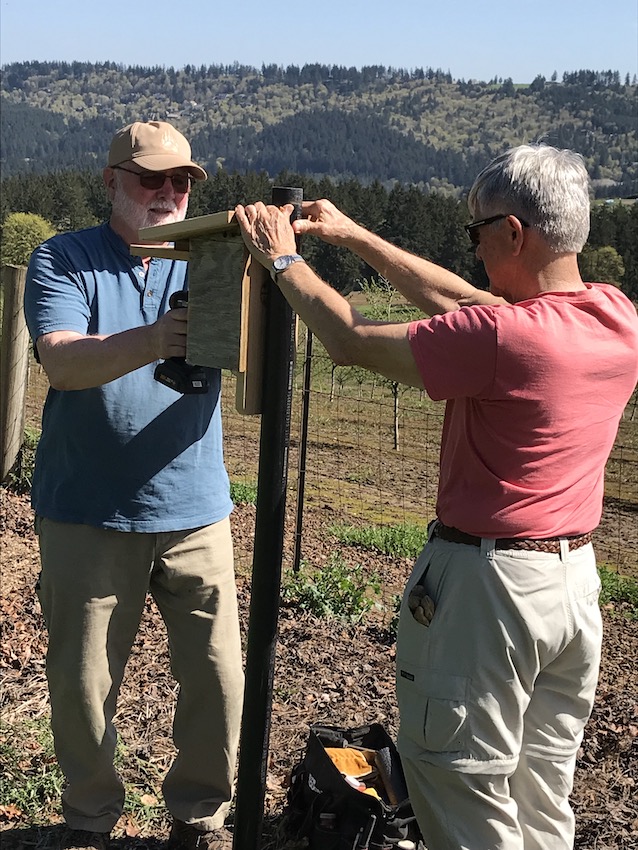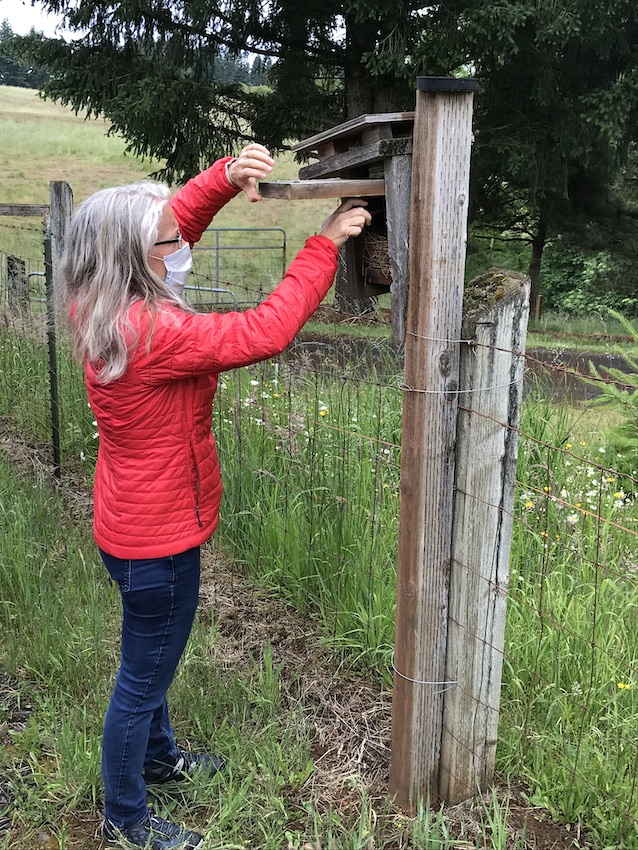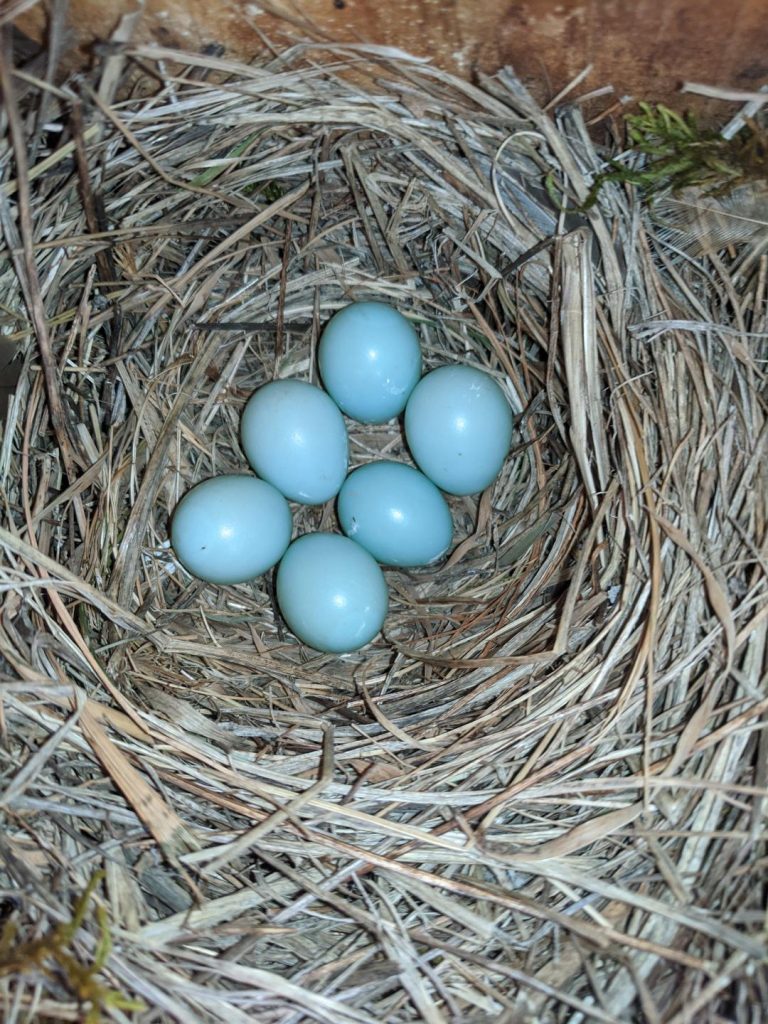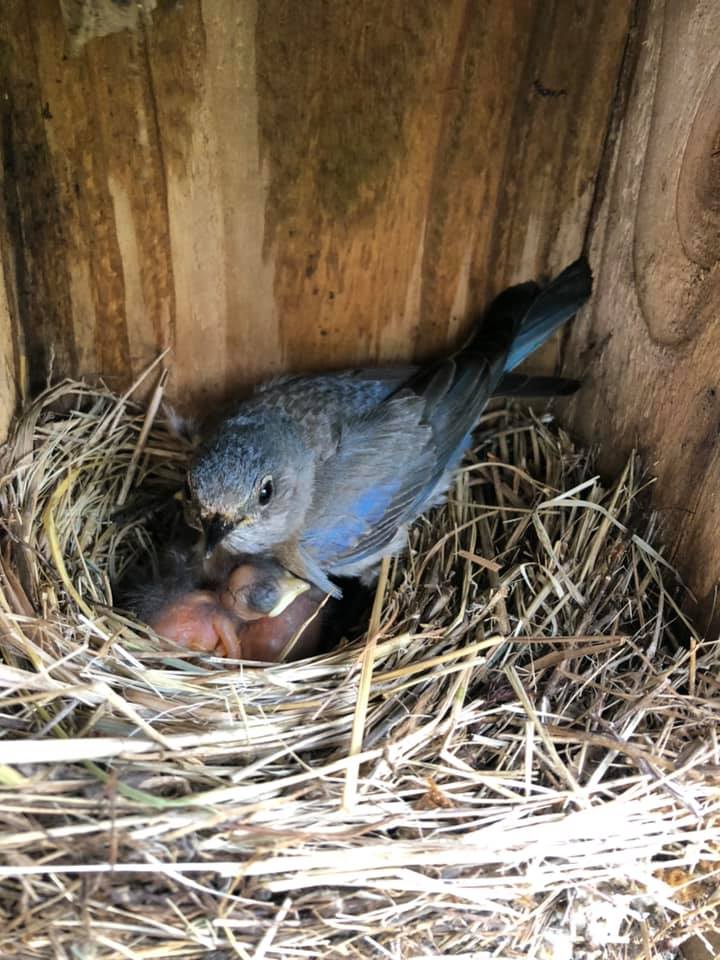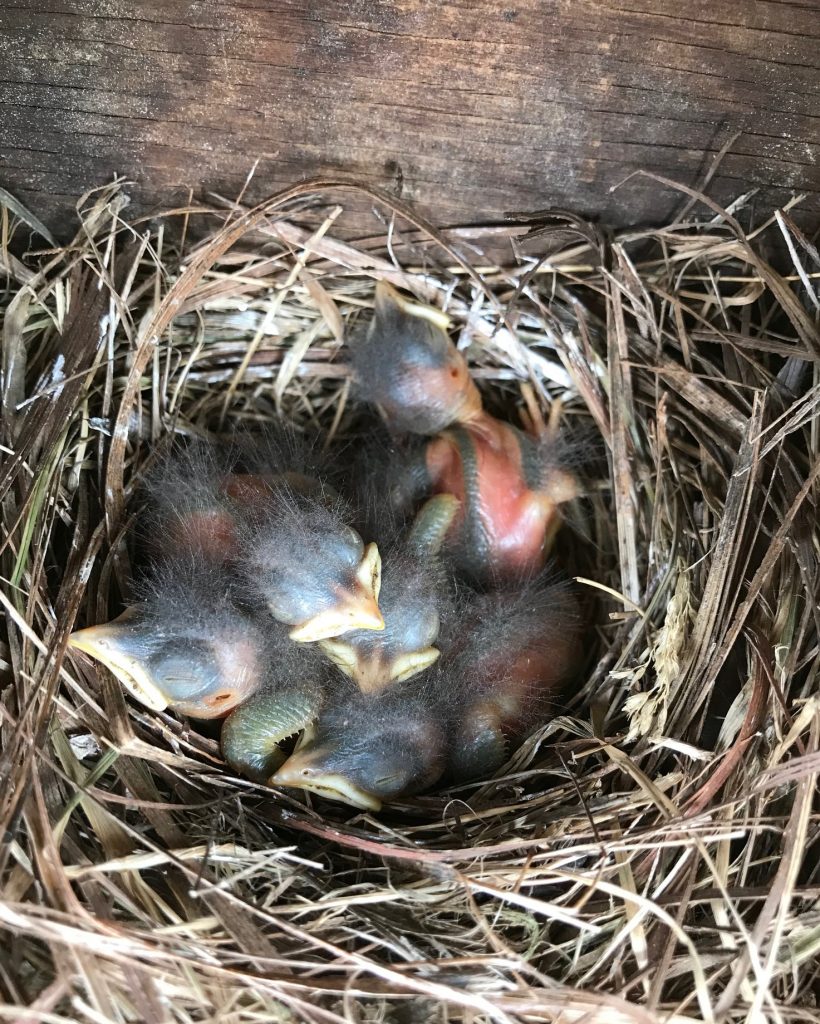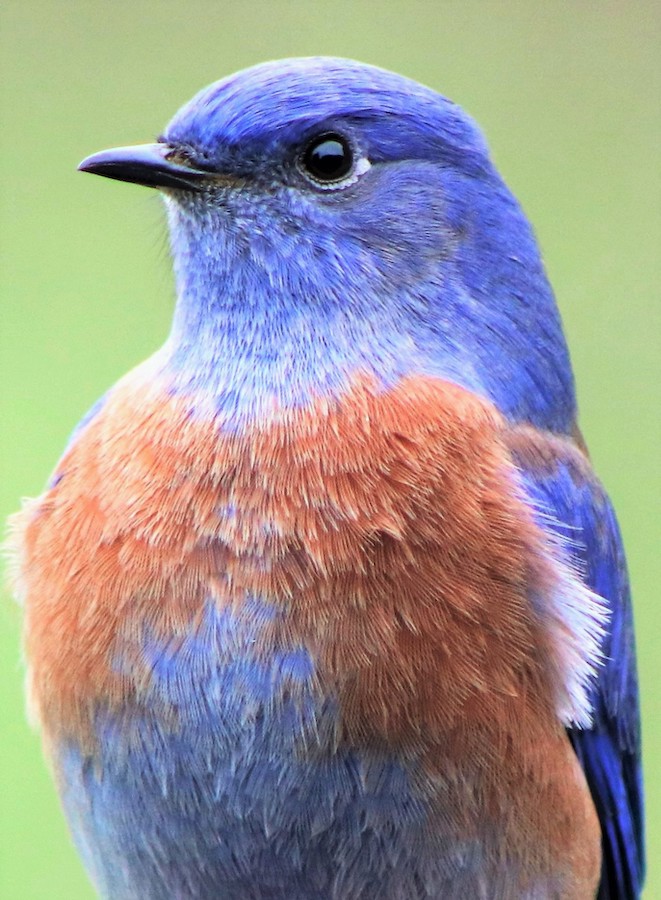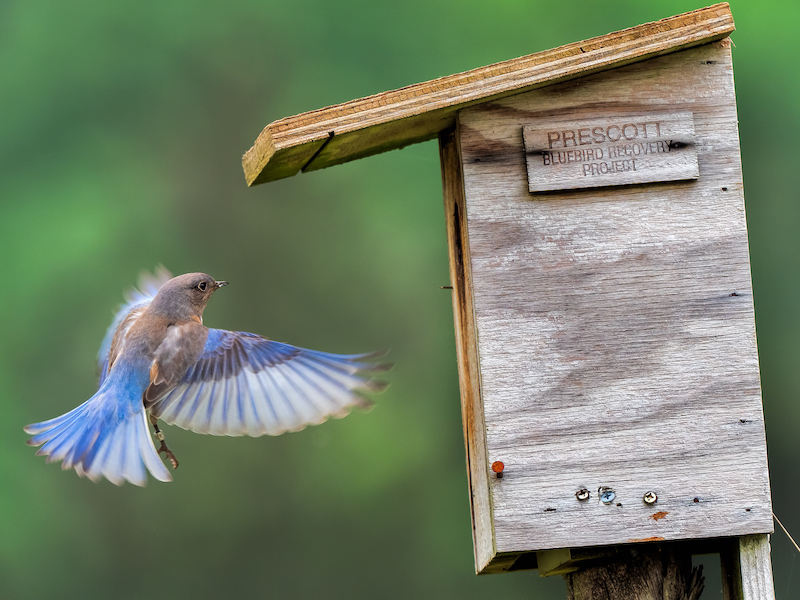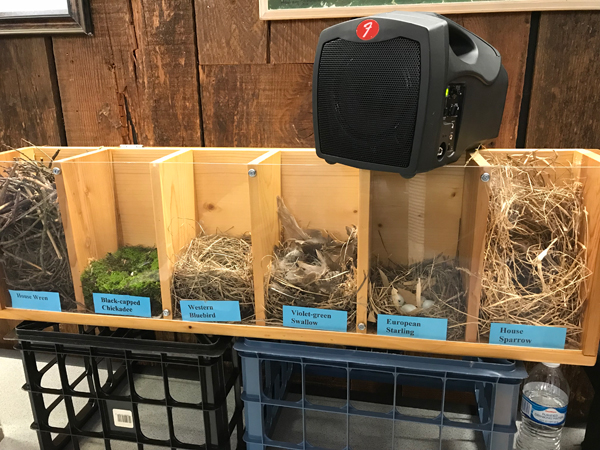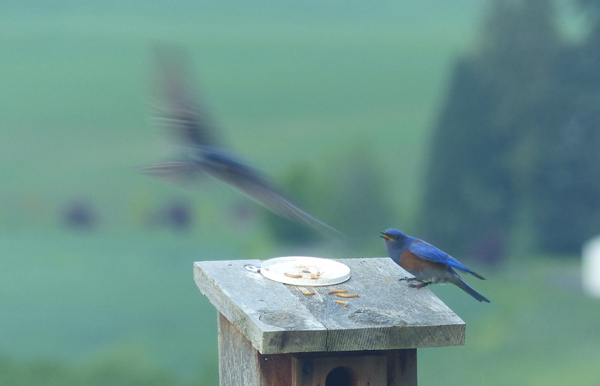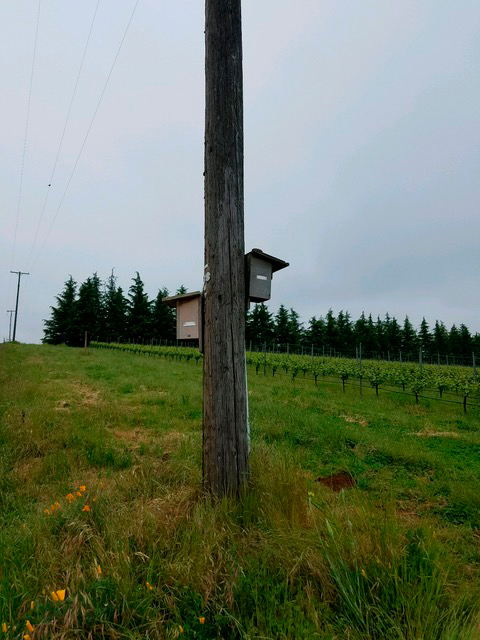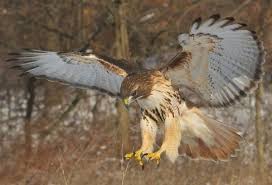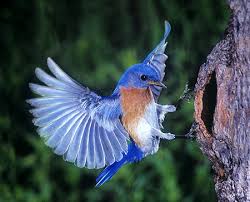By Susan Mates
In February of 2011, I was deciding whether I wanted to be a bluebird monitor. I was looking for a citizen scientist project that would get me out-of-doors and allow me to feel that I was doing something to help birds survive better. I expected to have a weekly commitment that would require keen observation, good record keeping, and, secretly, an excuse to wander around in pretty places.
All of those things happened, but what I didn’t expect was that:
Each time you open a nest box, it is like a treasure hunt. You will never know what to expect. You will catch your breath when there is the first egg in a beautifully designed nest, and laugh when you see a brand new baby chick with its clump of fuzzy down on its head. You might even startle a miffed Douglas tree squirrel that decided to occupy a box. Eight years in, there is a surprise every time.
You will be rewarded by bluebirds fluttering in to greet you at their boxes. You will watch their courtship, take pleasure in witnessing how they feed their hungry brood, and learn the personalities of some of them.
You will learn more than you guessed about the other birds in the area, their songs and their nests, where their favorite places are, and how they pay attention to each other.
You will be humbled by the property owners, who so generously allow us to traipse through their beautiful land, and some of them will become true and dear friends.
You will be struck by spotting close up, a turkey vulture airing its enormous wings, or seeing a line of pigs running pell mell toward a food bucket, or catch the eyes of a mother coyote hunting across a field in the mist.
Our project helps to supply nest boxes that replace habitat lost to human intervention, and we hope the boxes provide a boost for their survival. You will be amazed by the determination and bravery of the parents defending their brood. There are vulnerabilities and dangers for them at each stage, and their struggles and triumphs become more personal for us through this work.
You are, at times, going to be sticky with sweat, drenched with rain, covered by mud, or spend an hour picking weed seeds from your socks. And yes, sometimes you are surely going to encounter death, because you are, after all a witness to the whole cycle of life, and not all of the birds are going to survive.
When you see a line of fledglings sitting on a fence, waiting for a meal, you will feel hopeful that nature can heal, and that maybe you have been a tiny part of that. And I can guarantee that you will also, each time, find deep joy and awe.
This essay by Susan Mates was published in the PBRP Newsletter, Spring 2020.
